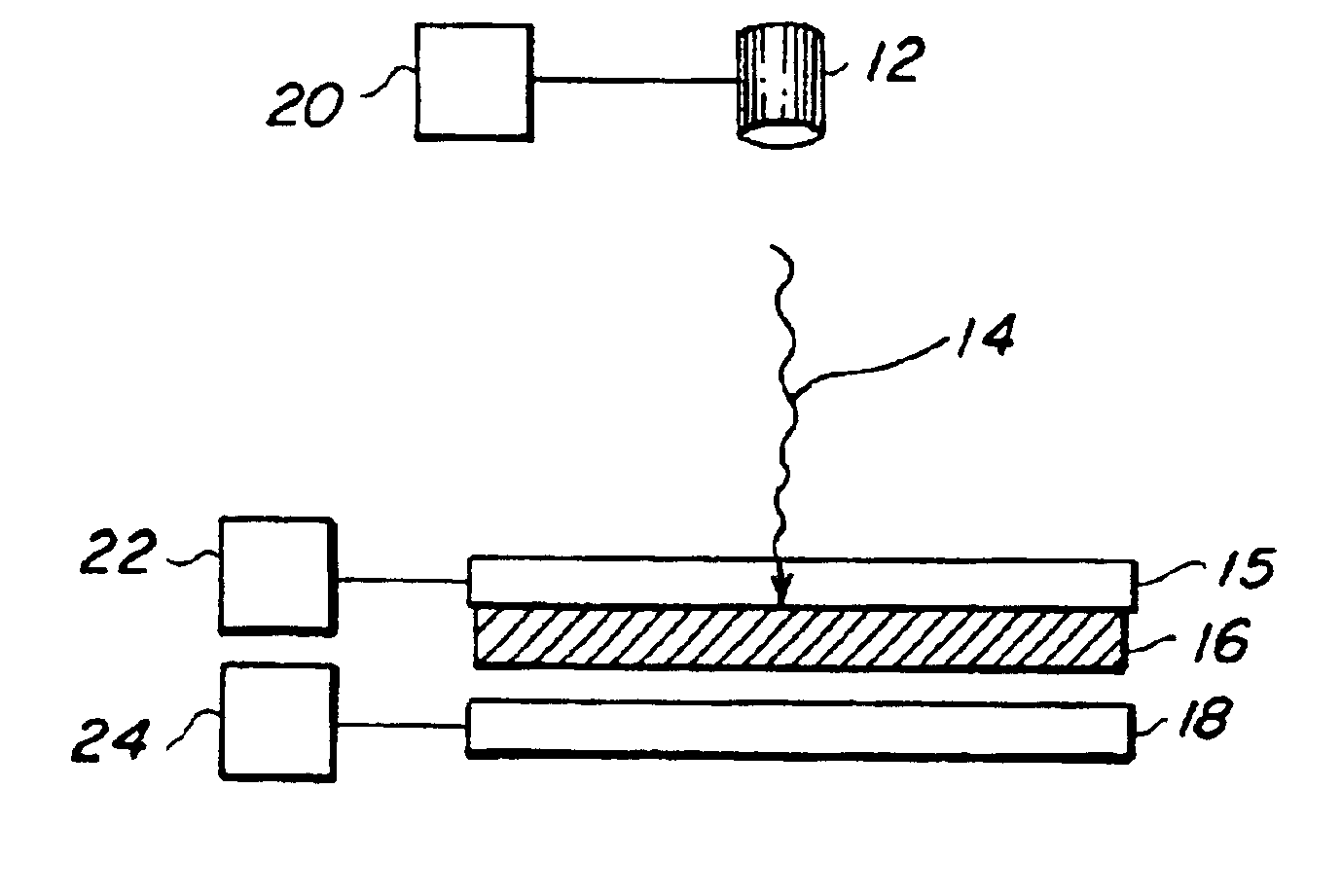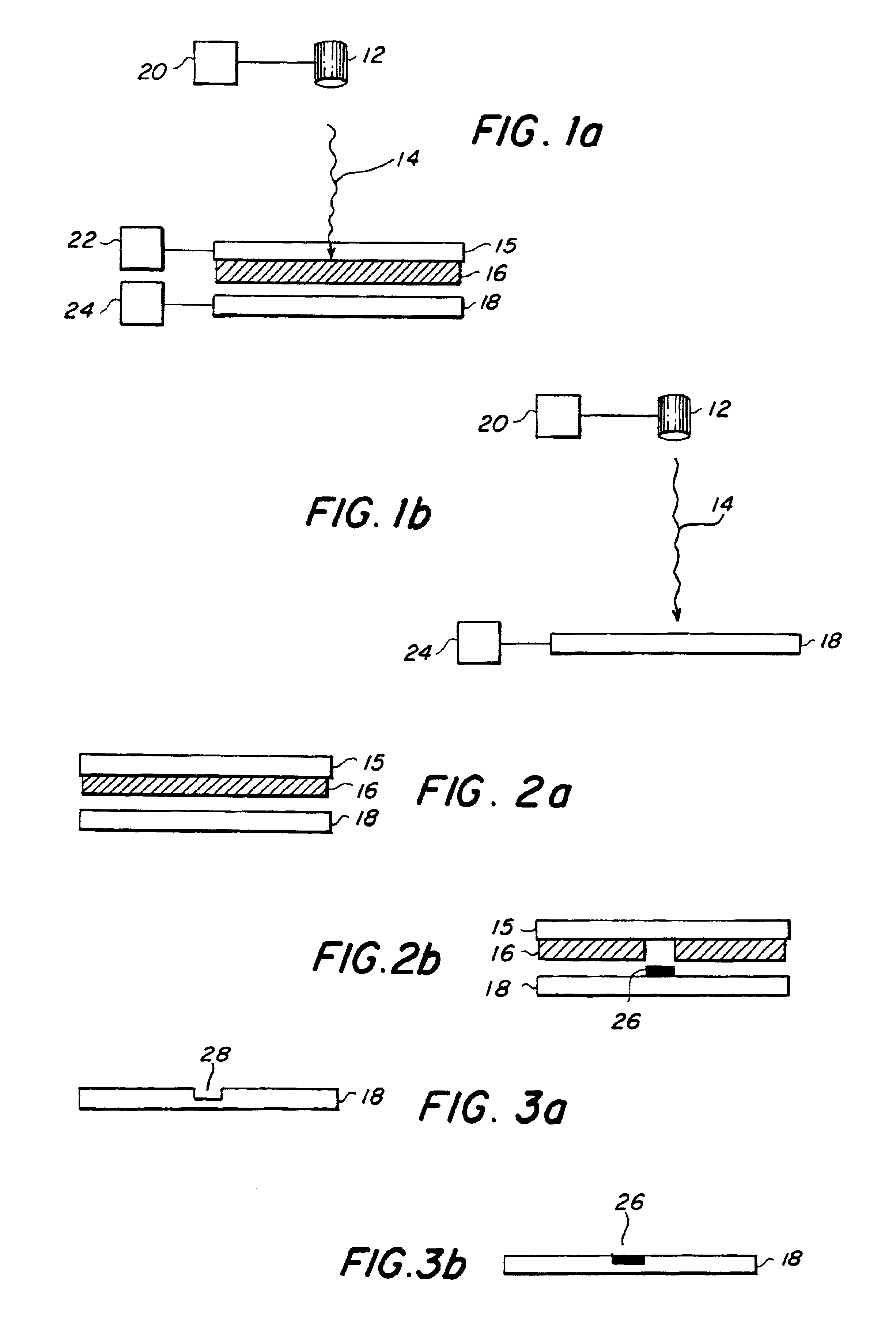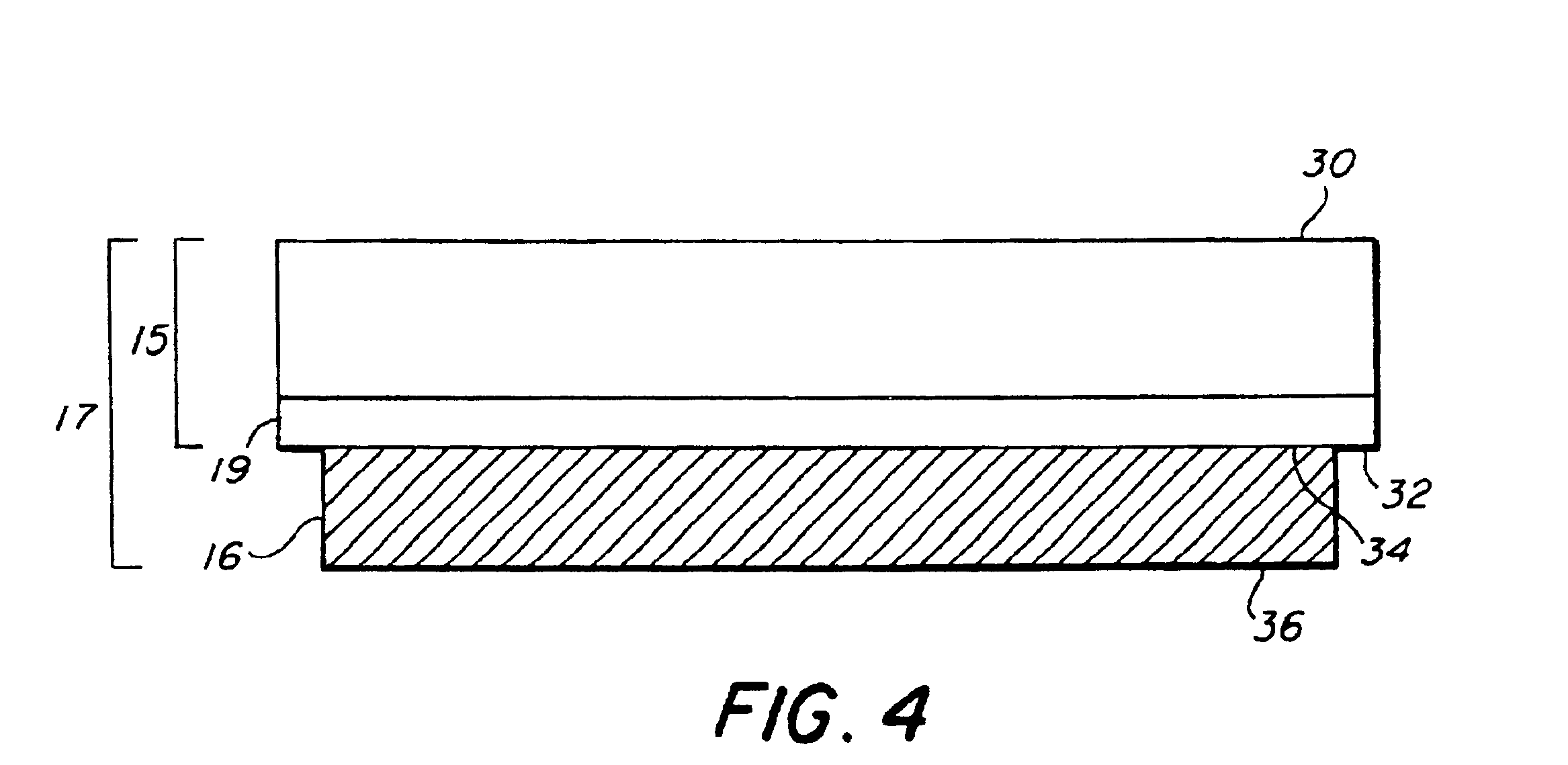Generation of biomaterial microarrays by laser transfer
a technology of biomaterials and laser transfer, which is applied in vacuum evaporation coating, railway signalling, packaging goods types, etc., can solve the problems of inability to adapt to large-scale rapid prototyping, limit the flexibility and capability of these approaches, and wet techniques are inherently limited by viscoelastic properties
- Summary
- Abstract
- Description
- Claims
- Application Information
AI Technical Summary
Benefits of technology
Problems solved by technology
Method used
Image
Examples
example 1
[0078]Creation of a microarray of bovine serum albumin (BSA)—The transfer material was active, biotinylated BSA. The matrix material was a 40% solution of glycerol in 50 mM Tris buffer. The receiving substrate 18 was a nitrocellulose coated slide. The protein was at a concentration of 250 μg / μL solution. In order to passivate the quartz ribbon, 100 nL of the protein solution was spread evenly over a 20 mm2 area of the quartz ribbon. Then a 200 nL aliquot of the protein solution was spread on top of the pre-exposed area of the ribbon. The laser was an ArF excimer, emitting 30 ns pulses of 193 nm energy. The energy density ranged from 50 to 200 mJ / cm2 and the laser was focused to a spot of 150×100 μm2. The viability of the transferred array was verified through fluorescent detection by exposing deposited protein to Cy-5-labeled streptavidin. The other active sites on the slide were first blocked with non-biotinylated BSA to limit background fluorescence. Fluorescence at 635 nm was obs...
example 2
[0079]Creation of a Microarray of Anti-BSA—The transfer material was active, anti-BSA. The matrix material was a 40% solution of glycerol in 50 mM Tris buffer. The receiving substrate 18 was a nitrocellulose coated slide. The antibody was at a concentration of 250 μg / μL solution. In order to passivate the quartz surface, 100 nL of the antibody solution was spread evenly over a 20 mm2 area of the quartz ribbon. Then a 200 nL aliquot of antibody solution was spread on top of the pre-exposed area of the ribbon. The laser was an ArF excimer emitting 30 ns pulses of 193 nm energy. The energy density ranged from 50 to 200 mJ / cm2 and the laser was focused to a spot of 150×100 μm2. The viability of the transferred antibody array was verified through fluorescent detection. The other active sites on the nitrocellulose slides were first blocked with AAA. The array was then exposed to biotinylated BSA, followed by a treatment of Cy-5-labeled streptavidin. Fluorescence at 635 nm was observed fro...
PUM
| Property | Measurement | Unit |
|---|---|---|
| temperature | aaaaa | aaaaa |
| thick | aaaaa | aaaaa |
| size | aaaaa | aaaaa |
Abstract
Description
Claims
Application Information
 Login to View More
Login to View More - R&D
- Intellectual Property
- Life Sciences
- Materials
- Tech Scout
- Unparalleled Data Quality
- Higher Quality Content
- 60% Fewer Hallucinations
Browse by: Latest US Patents, China's latest patents, Technical Efficacy Thesaurus, Application Domain, Technology Topic, Popular Technical Reports.
© 2025 PatSnap. All rights reserved.Legal|Privacy policy|Modern Slavery Act Transparency Statement|Sitemap|About US| Contact US: help@patsnap.com



